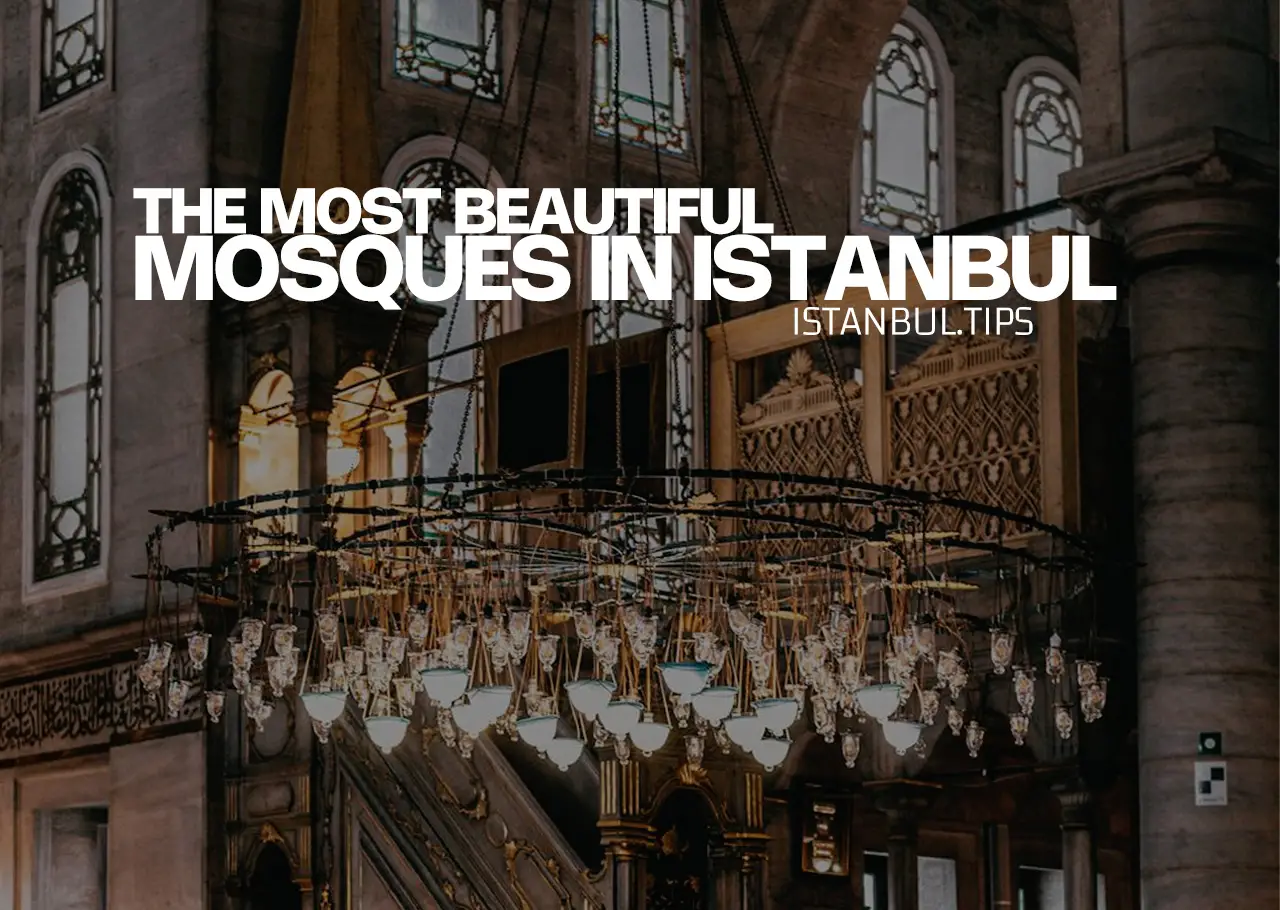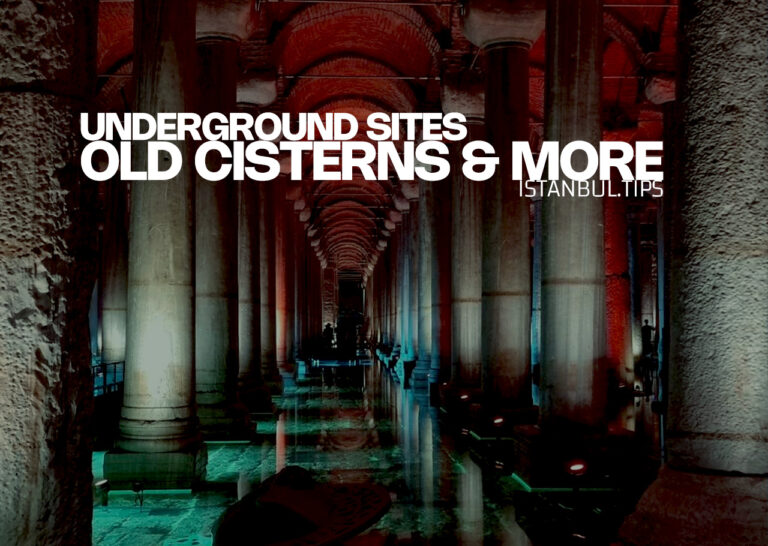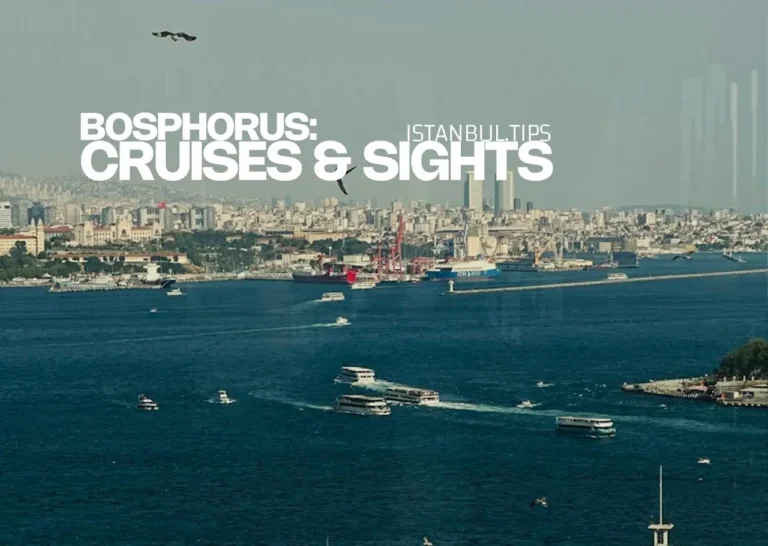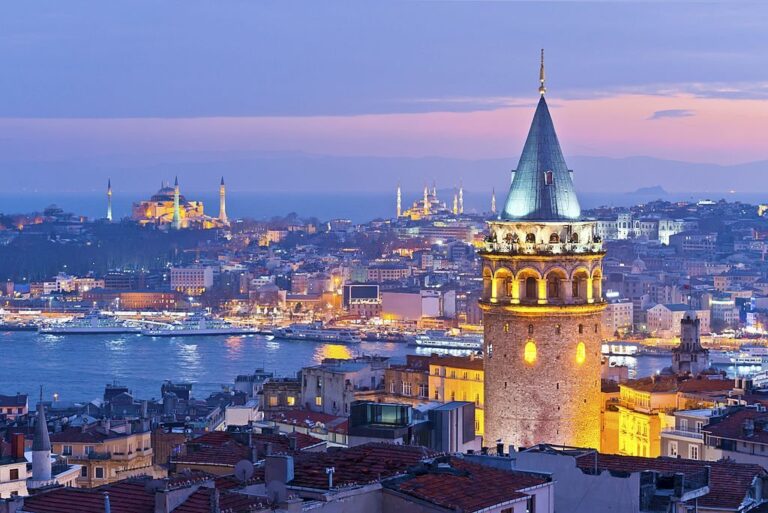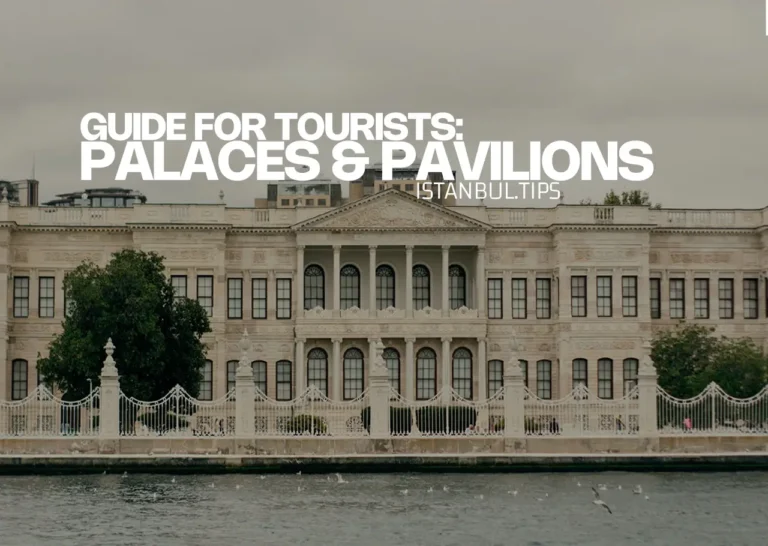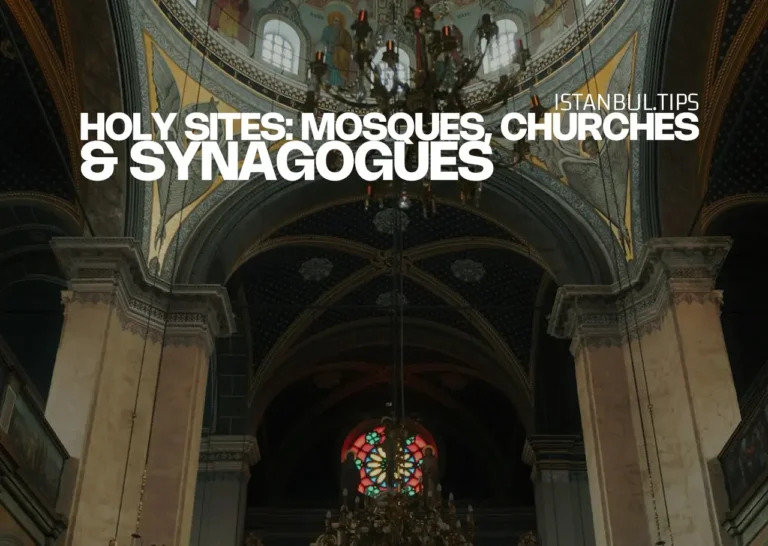Most Beautiful Mosques in Istanbul: Historical & New 2025
Pay Once and Have Free Attractions Entry for 7 days
Istanbul’s skyline has 3,365 impressive mosques, allowing visitors to see the city’s history, culture, and architecture. While some mosques are world-renowned, others remain quieter yet equally significant spots within their communities.
Admission is free to all mosques, with certain sites also hosting museums or historical exhibitions, like the Hagia Sophia and the Chora Mosque. Many mosques bear Byzantine influences, while others reflect newer architectural styles, blending traditional Islamic design with Ottoman aesthetics.
Visitors are welcome to enter any mosque outside prayer hours, allowing for a respectful experience of these stunning places.
🚗 First Time in Istanbul? Be Prepared & Carefree!
Istanbul: Private Airport Transfer with Meet and Greet 🌟 4.4 / 5 (318 reviews)
Bosphorus Dinner Cruise & Show with Private Table 🌟 4.8 / 5 (29936 reviews)
Istanbul: Full-Day Highlights Tour with Guide and Lunch 🌟 4.5 / 5 (1101 reviews)
Synagogues in Istanbul
The Jewish heritage of Istanbul in our guide to the city’s most historic synagogues.
Read MoreChurches in Istanbul
The Christian heritage of Istanbul in our guide to the city’s most historic churches.
Read MoreTips for Visiting Istanbul’s Mosques
Visiting Istanbul’s mosques is open to everyone, provided a few basic rules of etiquette are followed:
- Silence and Respect: Mosques are places of worship, so be quiet, especially when exploring more active prayer halls.
- Dress Code: Women should cover their heads, shoulders, and legs. Headscarves are often available at mosques in tourist areas.
- Shoes: Remove shoes before entering prayer areas. This practice is common in Turkish culture.
- Photography: Avoid photographing people in prayer and be mindful of privacy. Some mosques have spots for photos.
The Mosques District of Istanbul: Fatih
Fatih is one of the oldest and most historic districts in Istanbul, known as the “First Hill of Istanbul.” This area is home to over 350 mosques, many built during the early Ottoman period. Fatih is a must-see for those interested in Islamic and Byzantine heritage.
Hagia Sophia Grand Mosque (Ayasofya-i Kebir Cami-i Şerifi)
- Built: 532-537
- Address: Sultan Ahmet, Ayasofya Meydanı
- Note: Open to visitors outside prayer times.
Originally constructed as a cathedral by Byzantine Emperor Justinian I, Hagia Sophia has been transformed over centuries: first into a mosque after the Ottoman conquest in 1453, then into a museum in 1935, and back into a mosque in 2020. The new museum was opened on 15 January 2024, and now you can see upper galleries for €25.
Hagia Sophia is on the UNESCO World Heritage list, and it remains a top attraction in Istanbul for its stunning architecture and historical significance.
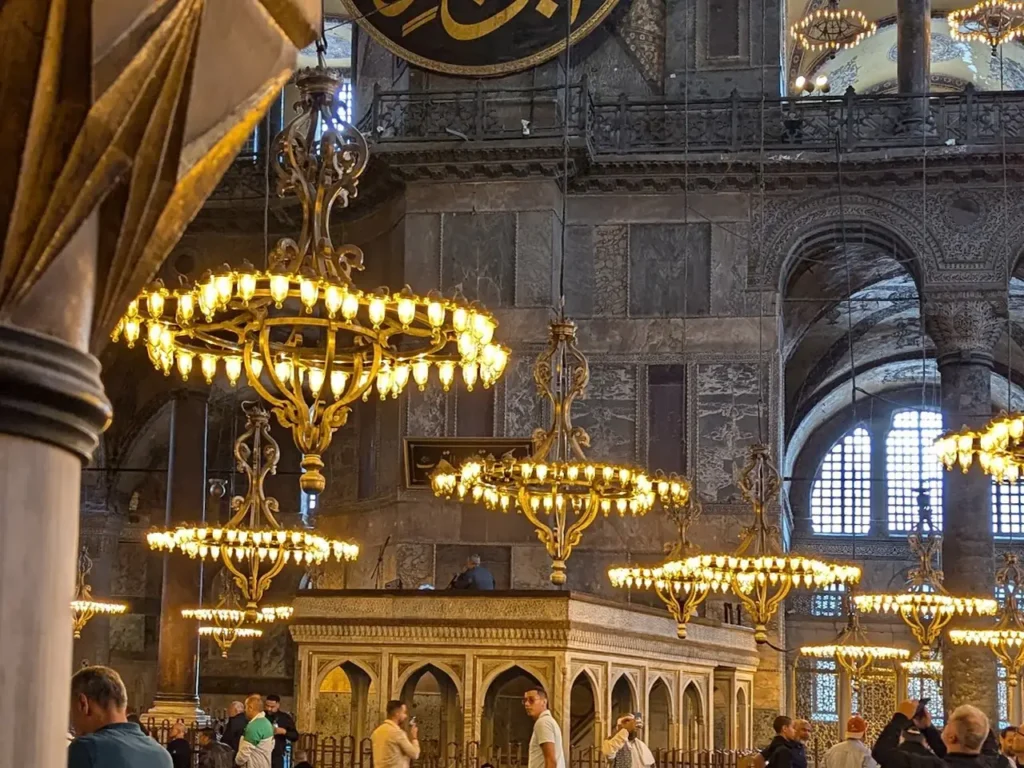
Sultanahmet Mosque (The Blue Mosque)
- Built: Early 17th century
- Address: Binbirdirek, At Meydanı Cd No:10, 34122 Fatih/İstanbul, Türkiye
- Capacity: Holds up to 10,000 worshippers
- The tiles are not really so blue, if you want blue tiles go to Rustem Pasha Mosque.
Commissioned by Sultan Ahmet I, the Blue Mosque stands out with its six minarets, which were controversial at the time for rivaling the minaret count of the Great Mosque in Mecca. Famous for its blue tiles, this mosque is both an active place of worship and an architectural icon of Istanbul.
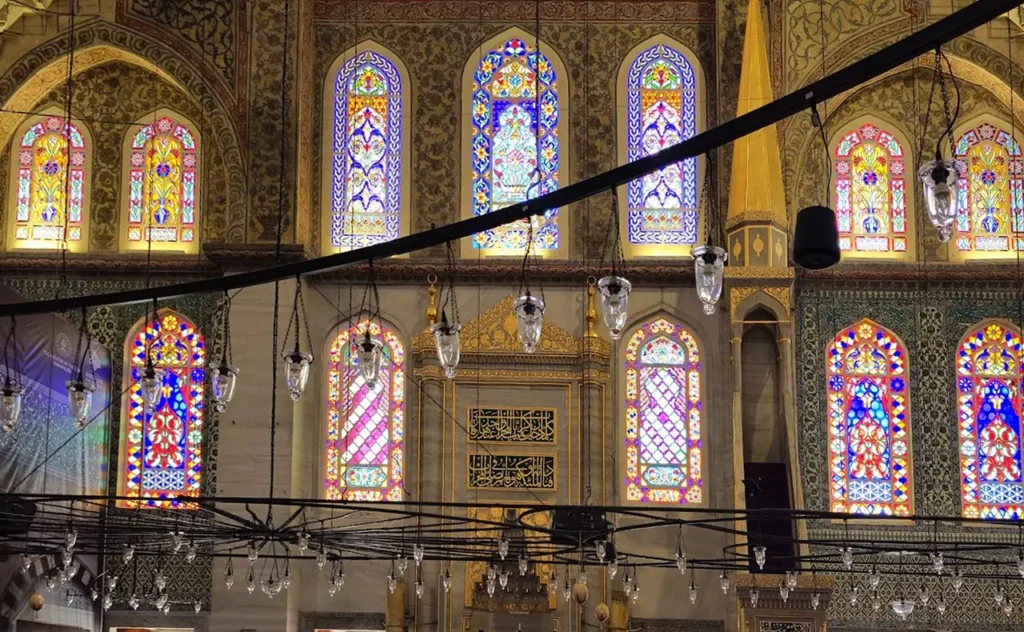
Chora Mosque (Kariye Camii)
- Originally built: 6th century
- Address: Derviş Ali, Kariye Cami Sk. No:18, 34087 Fatih/İstanbul, Türkiye
- Entry Fee: €20 on non-prayer days
- Highlight: Remarkable mosaics and frescoes
Once an ancient Byzantine church, then a mosque, and later a museum, the Chora Mosque recently reopened as a mosque. The interior features mosaics and frescoes from the 11th century, making it one of Istanbul’s most beautiful examples of Byzantine art.
Note that access for non-Muslims is restricted during Friday prayers.
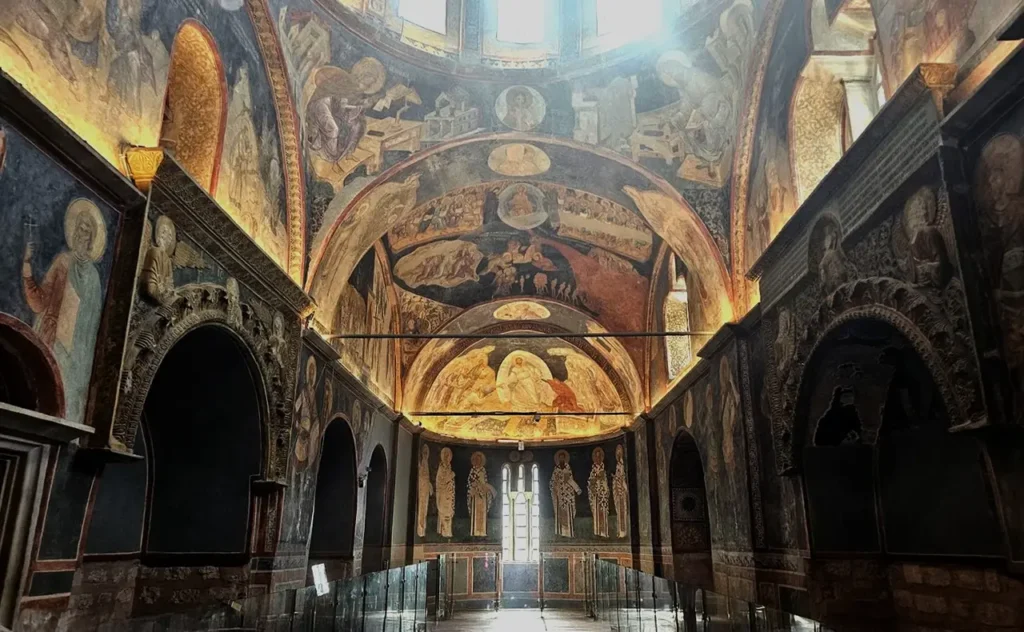
Küçük Ayasofya Camii (Aya Sergios ve Bachos Kilisesi)
- Highlight: A UNESCO World Heritage site for its unique Byzantine architecture and mosaics.
- Address: Küçük Ayasofya, Küçük Ayasofya Camii Sokagi No:20, 34122 Fatih/İstanbul, Türkiye
Originally the Church of Saints Sergius and Bacchus, Küçük Ayasofya was built between 527 and 536 by Emperor Justinian I. It later inspired the design of the famous Hagia Sophia. Legend has it that Saints Sergius and Bacchus appeared in Justinian’s dream, declaring his innocence before his uncle, Emperor Justin, which led him to build this church in their honor after ascending to the throne.
In 2020, after extensive restoration, it was reopened as a mosque.
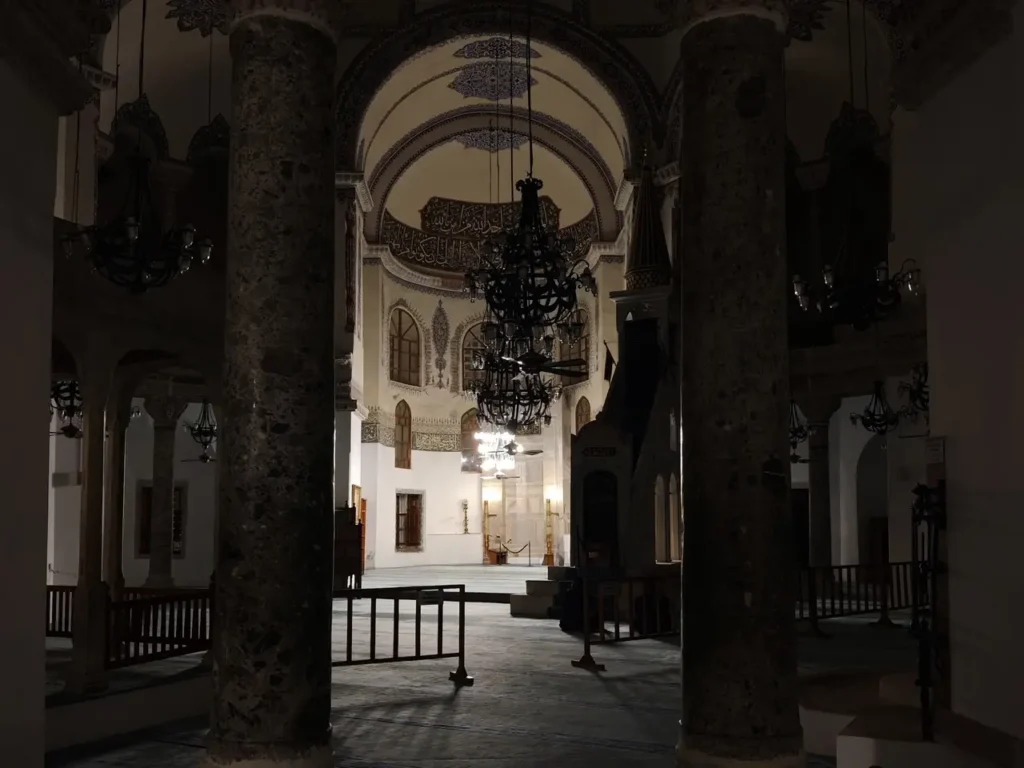
Rüstem Paşa Mosque
- Address: Rüstem Paşa, Hasırcılar Cd. No:62, 34116 Fatih/İstanbul, Türkiye
- Highlight: High-quality İznik tiles, featuring floral and geometric patterns.
- Tip: Visit early to enjoy the mosque’s quiet beauty before it gets busy.
Built in 1561 for Rüstem Pasha, son-in-law of Suleiman the Magnificent, this mosque is famed for its exquisite İznik tiles that adorn the walls. Known for its small scale and beautiful courtyard, Rüstem Paşa Mosque is a hidden gem just off the streets near the Spice Bazaar.
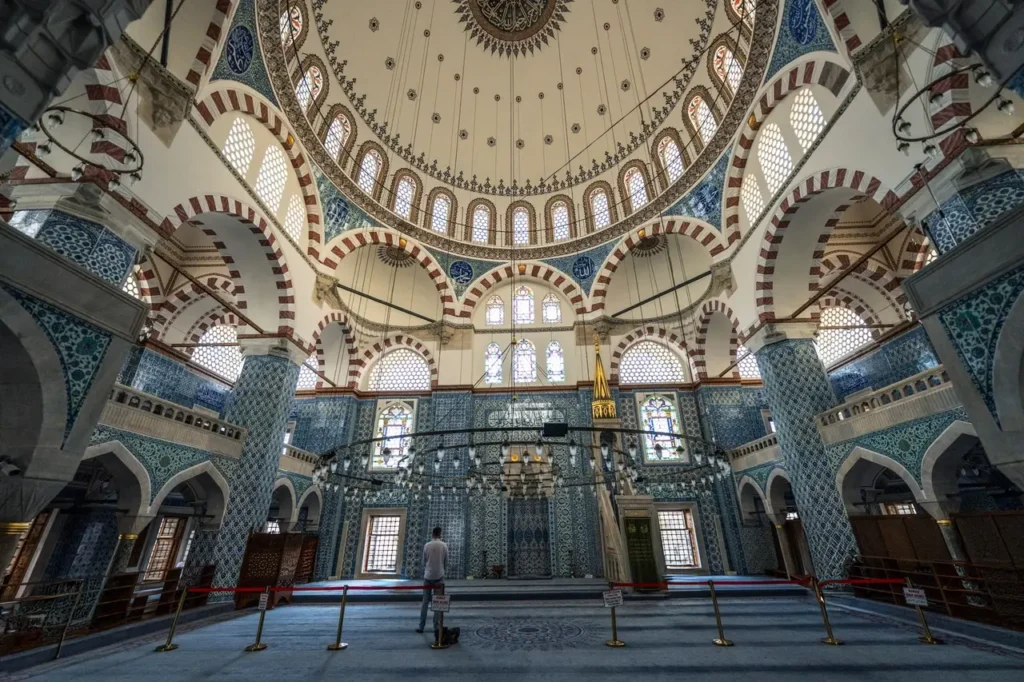
Fatih Mosque (Fatih Camii)
- Address: Ali Kuşçu, Hattat Nafiz Caddesi No:6, 34083 Fatih/İstanbul, Türkiye
- Highlight: Mehmed the Conqueror’s tomb is behind the mosque.
- Tip: Visit on Wednesdays to explore the Çarşamba Pazarı market nearby.
The Fatih Mosque, Istanbul’s first great imperial mosque, was commissioned by Mehmed the Conqueror on the site of the Church of the Holy Apostles. Built in 1470, it was reconstructed in a Baroque style after an earthquake in 1766. Today, it stands as a monumental symbol of the Ottoman conquest and includes a large mosque complex with medresses.

Yeni Cami (New Mosque)
- Address: Rüstem Paşa, Yeni Cami Cd. No:3, 34116 Fatih/İstanbul, Türkiye
- Highlight: The nearby tomb of Valide Sultan Turhan Hadice and six sultans.
- Tip: Closed to visitors during prayer times; best visited mid-morning or late afternoon.
Built between 1597 and 1665, this mosque is known as the “New Mosque” despite being nearly 400 years old. With its rich interior decorated with İznik tiles, gold leaf, and marble, Yeni Cami stands as a prominent fixture in the Eminönü skyline, near the Galata Bridge.
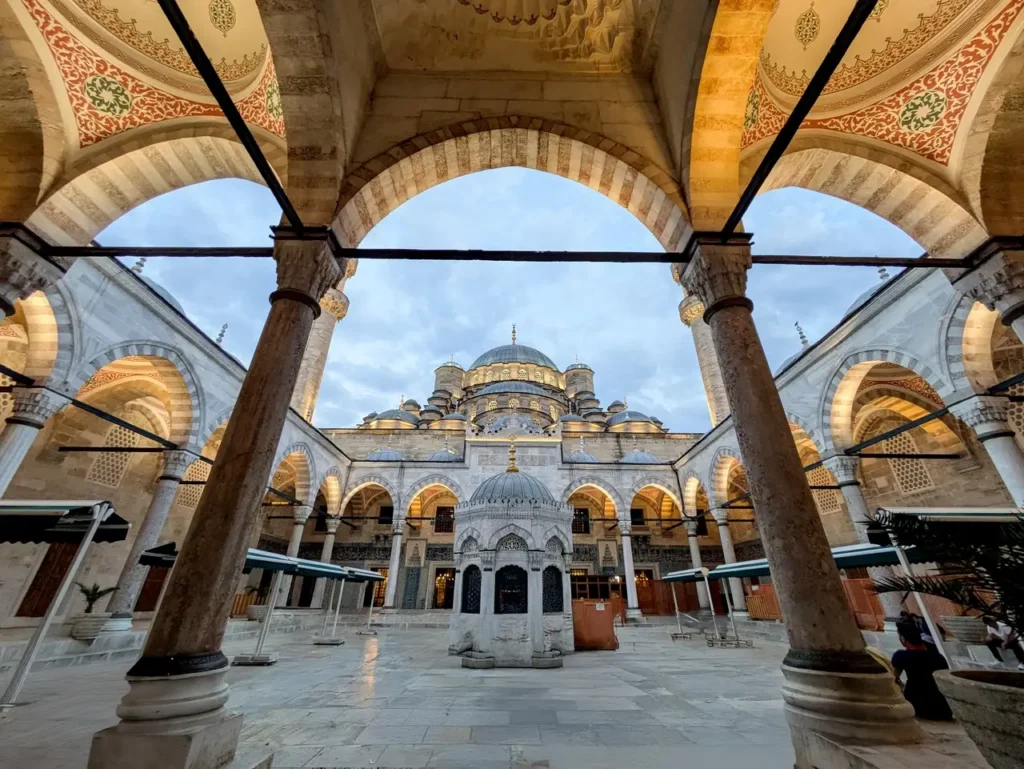
Suleymaniye Mosque
- Address: Süleymaniye, Prof. Sıddık Sami Onar Cd. No:1, 34116 Fatih/İstanbul, Türkiye
- Highlight: The tombs of Suleiman the Magnificent and his wife Hürrem Sultan are located here.
Commissioned by Suleiman the Magnificent in the 16th century, this iconic mosque offers stunning views of the Golden Horn. Designed by Mimar Sinan, the mosque’s elegant structure combines Byzantine and Islamic architectural elements.
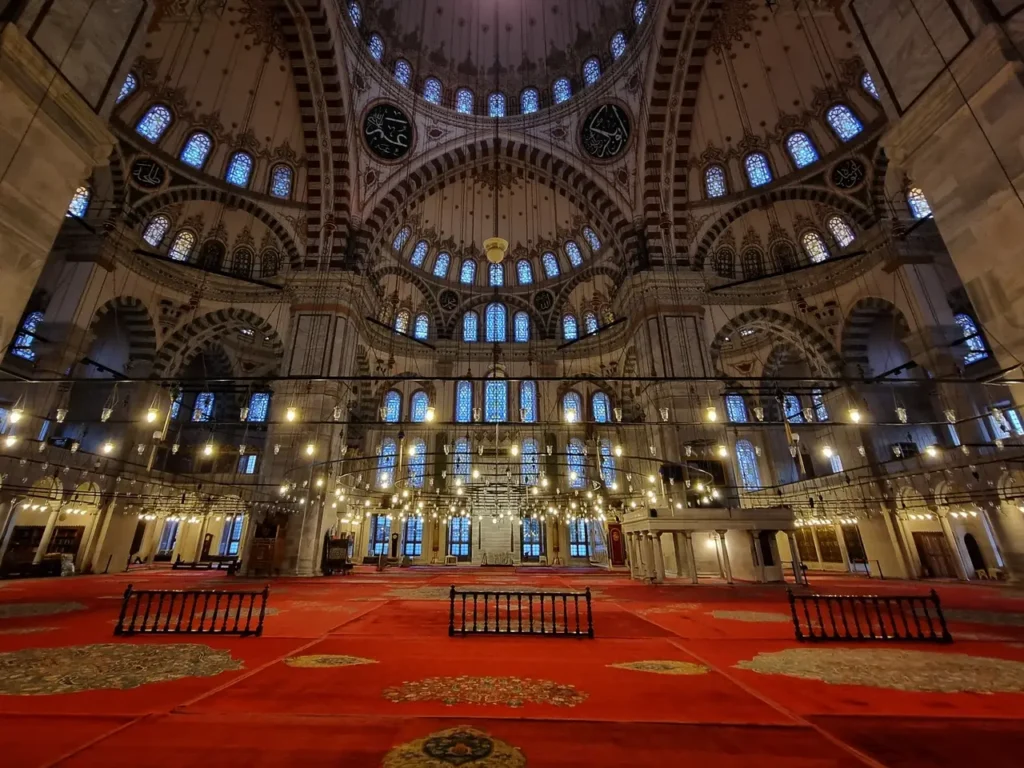
Beyazit Mosque
- Address: Beyazıt, Yeniçeriler Cd., 34126 Fatih/İstanbul, Türkiye
- Highlight: The central ablutions fountain and enclosed courtyard are beautiful.
- Tip: Combine with a visit to the Grand Bazaar.
The second imperial mosque built after Fatih Mosque, Beyazit Camii was completed in 1506 under Sultan Beyazit II. Inspired by Hagia Sophia, it uses a variety of fine stone, including marble and rare granite.
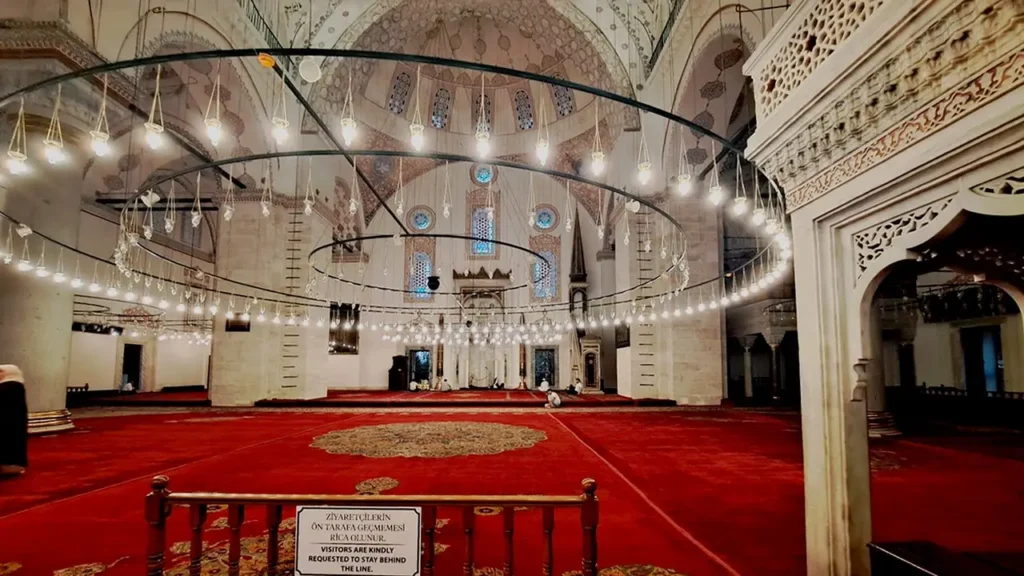
Sokollu Mehmed Pasha Mosque
- Address: Küçük Ayasofya, 34122 Fatih/İstanbul, Türkiye
- Tip: The mosque’s hilltop position offers a unique view of Istanbul’s skyline.
Commissioned by Grand Vizier Sokollu Mehmed Pasha in 1571 and designed by the famous architect Sinan, this mosque is one of Istanbul’s hidden gems. Tucked away on a hillside in Kadirga, it features walls adorned with İznik tiles and an interior that draws you in with its octagonal design. Unique to this mosque are the small fragments of the Kaaba’s black stone.
Pertevniyal Valide Sultan Mosque
A blend of Ottoman and Gothic styles, this mosque reflects the late Ottoman Empire’s fascination with European influences. Built in 1871 for the mother of Sultan Abdulaziz, it showcases Baroque carvings, elegant arches, and Gothic-inspired interior details. It’s a striking stop if you’re exploring Eminonu and nearby Aksaray.
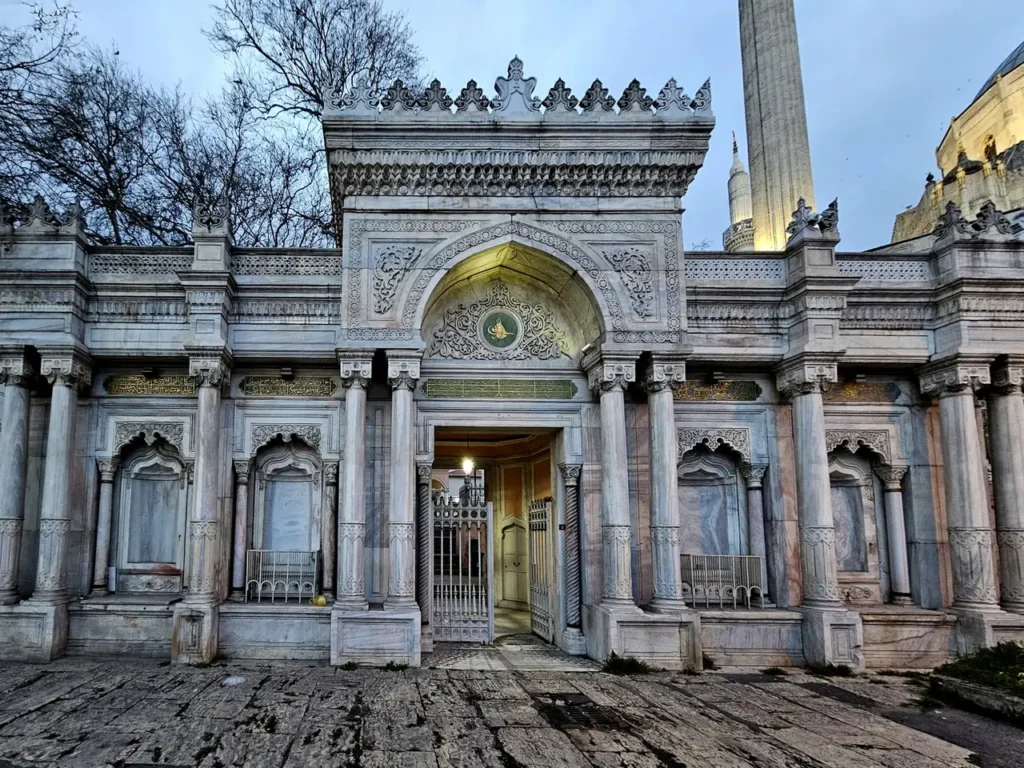
Laleli Mosque
- Address: Kemal Paşa, Ordu Cd., 34134 Fatih/İstanbul, Türkiye
- Tip: A quick walk from the Grand Bazaar.
The “Tulip Mosque” was commissioned by Sultan Mustafa III and completed in 1763. Its Baroque architecture, with stained-glass windows and a striking prayer hall, stands out among Ottoman mosques. The sebil (water kiosk) on its grounds used to offer sherbet, a traditional drink, to the public.
Hobyar Mosque
In the lively trade district of Eminönü, Hobyar Mosque is a hidden gem. Small but elegant, it’s a quick detour if you’re exploring the Spice Bazaar. Built in the 18th century, it represents the simple but elegant neighborhood mosques of the era.
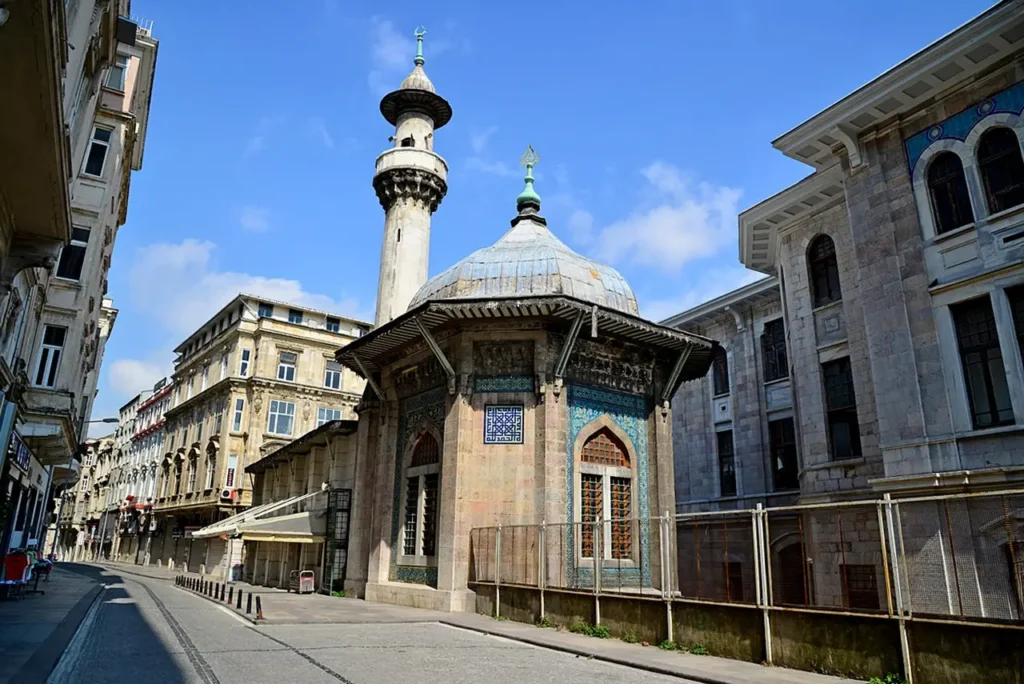
Nuruosmaniye Mosque
- Address: Mollafenari, Vezirhan Cd. No:4, 34120 Fatih/İstanbul, Türkiye
- Tip: Enter from the back courtyard for a quiet moment and to admire the architectural details. The library houses over 5,000 rare manuscripts.
Built between 1748 and 1755, Nuruosmaniye Mosque stands as a fine example of Ottoman Baroque architecture. The massive dome and elegant interior mark a stylistic transition, blending Ottoman and European aesthetics.

Mihrimah Sultan Mosque (Edirnekapı)
- Address: Karagümrük, Fevzi Paşa Cd. No:353, 34091 Fatih/İstanbul, Türkiye
- Tip: Arrive in the late afternoon to watch the sun cast golden hues across the interior
Commissioned by Süleyman the Magnificent’s daughter, Mihrimah, this 16th-century mosque by Sinan occupies one of the city’s highest points. The mosque’s airy design, stained glass, and intricate details pay tribute to Mihrimah’s name, which means “sun and moon,” with symbolic light entering the mosque at sunrise and sunset.
Şehzade Mehmet Mosque
- Address: Kalenderhane, 34134 Fatih/İstanbul, Türkiye
- Tip: The peaceful courtyard is a calm and quiet.
Süleyman the Magnificent commissioned this mosque in memory of his son Prince Mehmet. Built by Sinan, it features a large dome, a charming garden, and an outer courtyard. The mosque complex also has tombs for various royal family members and Ottoman officials.
Nallı Mescid
- Address: Hobyar, Ankara Cd. No:5, 34112 Fatih/İstanbul, Türkiye
- Architecture: Unique Indo-Persian style with gold decor
- Tip: Ideal for a quick visit if you’re exploring Fatih’s lesser-known sites
Named after the horseshoe (“nal” in Turkish) motifs on its minaret, Nallı Mescid is a small but fascinating mosque in the heart of Fatih. Originally built by Imam Ali during Sultan Mehmed the Conqueror’s reign, the mosque has undergone multiple renovations, giving it an eclectic Indo-Persian style with vibrant red and white ceramic tiles and some gilded details.
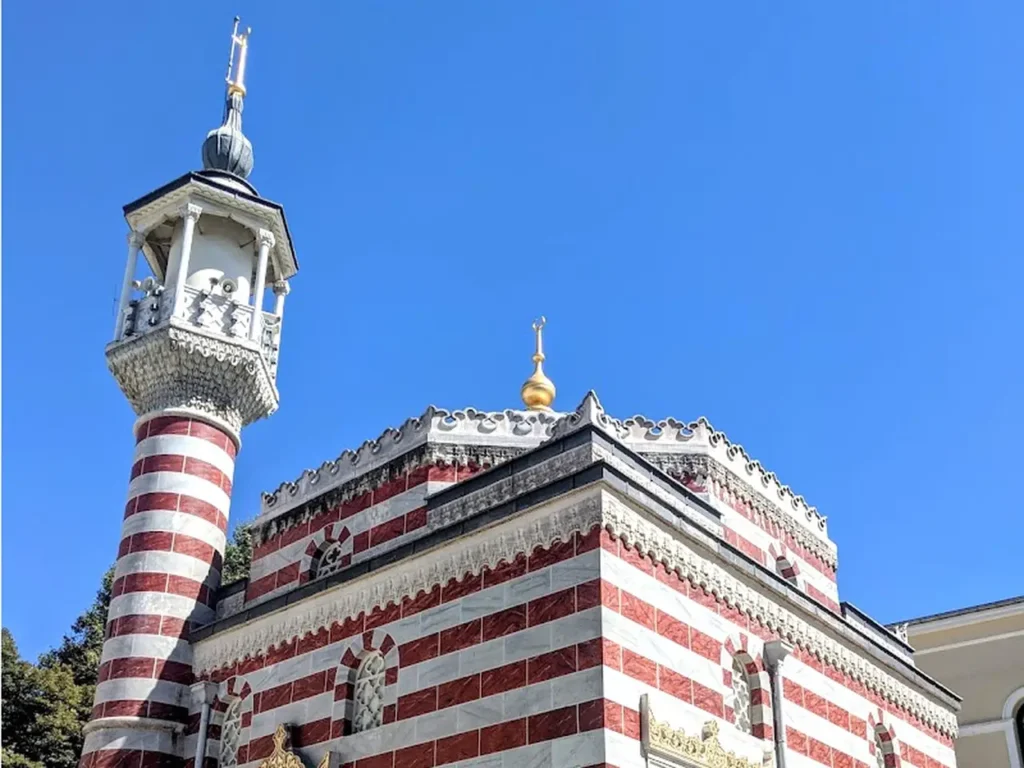
Don’t Miss The Best Tours and Cruises in Istanbul
Enjoy Free Guided Tours to Famous Mosques with Istanbul E-Pass
The Istanbul E-Pass is a valuable option for travelers, as it offers guided tours to famous mosques of Istanbul, along with 50+ other attractions, providing a convenient and cost-effective way to explore the city.
Mosques in Beyoğlu: Taksim, Galata, and Cihangir
Beyoğlu is not just about bustling Istiklal Street and the Galata Tower; it’s also home to beautiful mosques that carry rich histories and unique architectural styles.
Teşvikiye Mosque
Teşvikiye Mosque, a Neoclassical and Baroque masterpiece, was built in 1854 by Sultan Abdülmecid on the site of a previous mosque created by Sultan Selim III in the late 18th century. Known for its facade, courtyard, and unique calligraphy details, Teşvikiye Mosque’s architecture blends European influences with Ottoman styles.
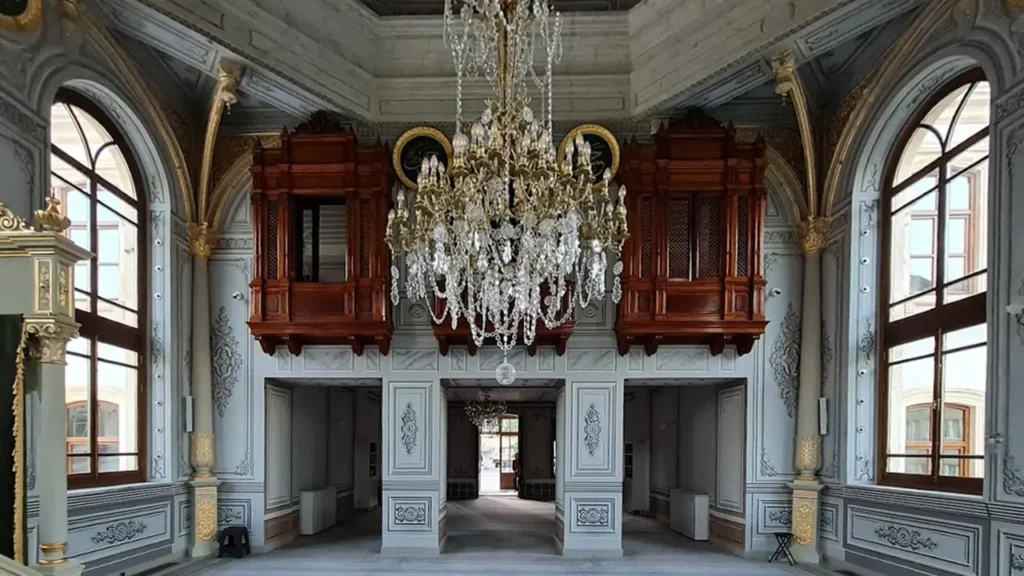
Nusretiye Mosque
- Address: Kılıçali Paşa, Meclis-i Mebusan Cd. No:4, 34425 Beyoğlu/İstanbul, Türkiye
- Fact: The mosque is featured in one of Ivan Aivazovsky’s most famous paintings, which sold for over £3 million.
Nusretiye Mosque, located near the Galata Port, is an architectural gem that combines Baroque style with traditional Ottoman design. Built in the 1820s by Sultan Mahmud II, it is a symbol of the Tanzimat era, a time of modernization in the Ottoman Empire.
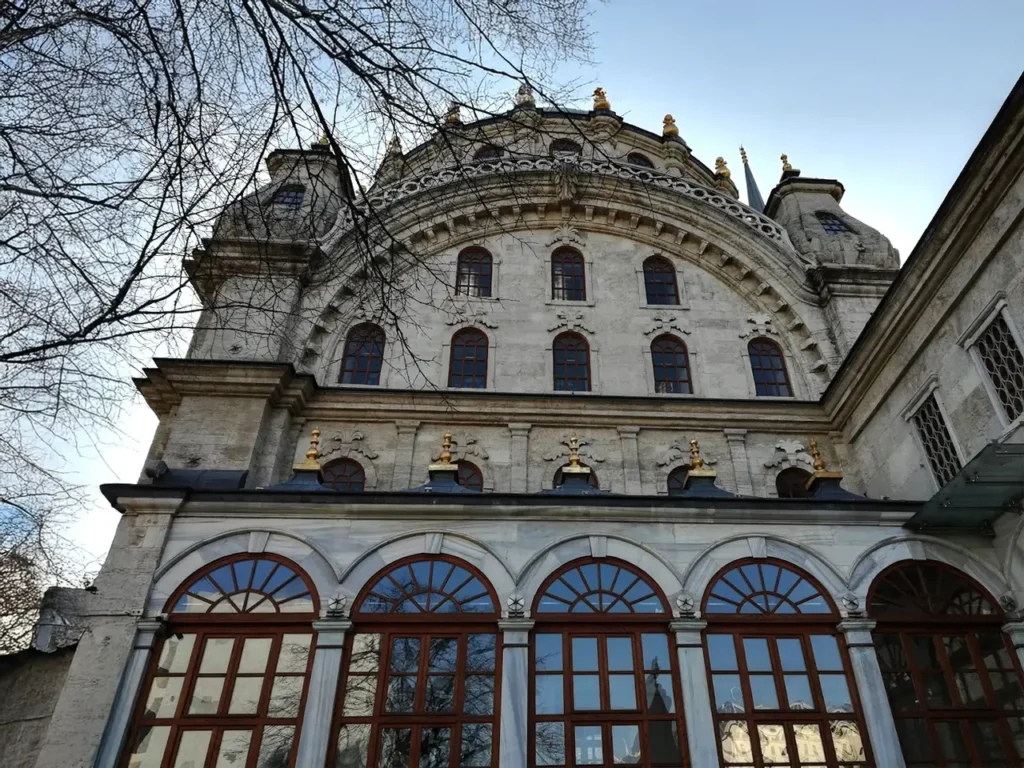
Dolmabahçe Mosque
Situated along the Bosphorus and next to Dolmabahçe Palace, this mosque is an example of Ottoman Baroque. Built in 1855, its design features elegant domes, an ornate interior, and large windows that allow natural light to illuminate the space.
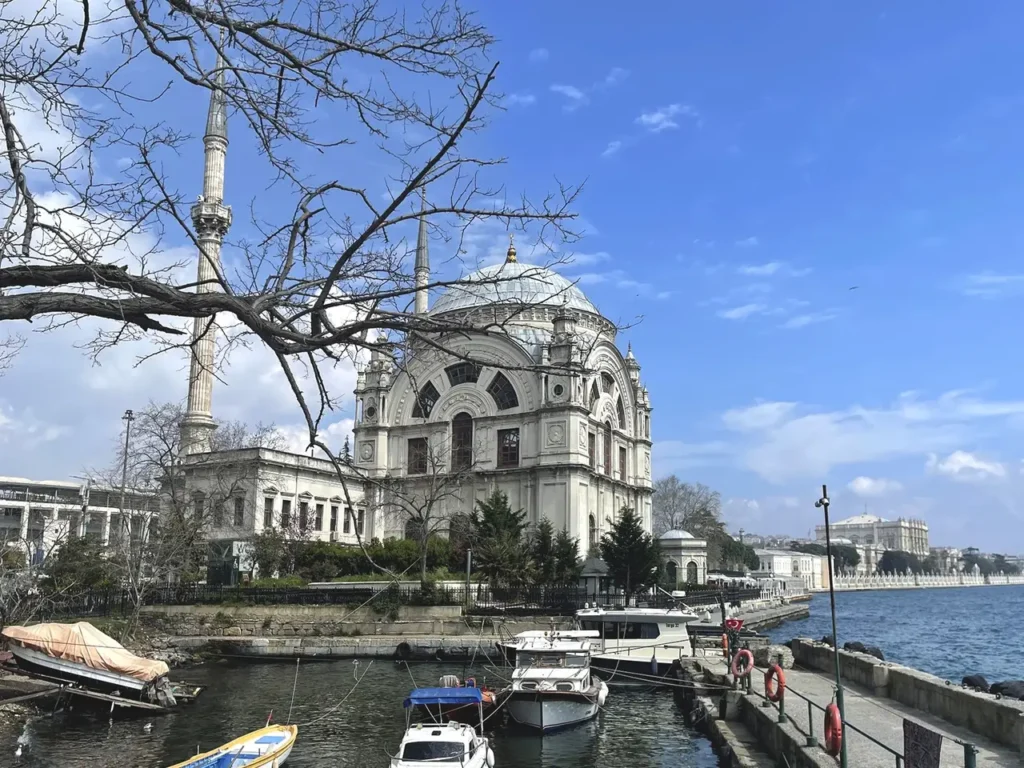
Kılıç Ali Pasha Mosque
- Address: Kemankeş Karamustafa Paşa, Kemeraltı Cd. No:50, 34425 Beyoğlu/İstanbul, Türkiye
- Visit the courtyard and nearby hammam.
Designed by the famed architect Mimar Sinan, Kılıç Ali Pasha Mosque was completed in 1580 to honor the Ottoman admiral Kılıç Ali Pasha. The mosque’s design resembles the Hagia Sophia, with a central dome and impressive arches.
Cihangir Mosque
Perched on a hill in the Cihangir, this mosque offers one of the best panoramic views of the Bosphorus. Originally commissioned by Suleiman the Magnificent in the 16th century, the mosque was built to honor his son Cihangir.
💡 Tip: Visit in the evening for a quiet moment and sunset views over the Bosphorus from the mosque’s terrace.
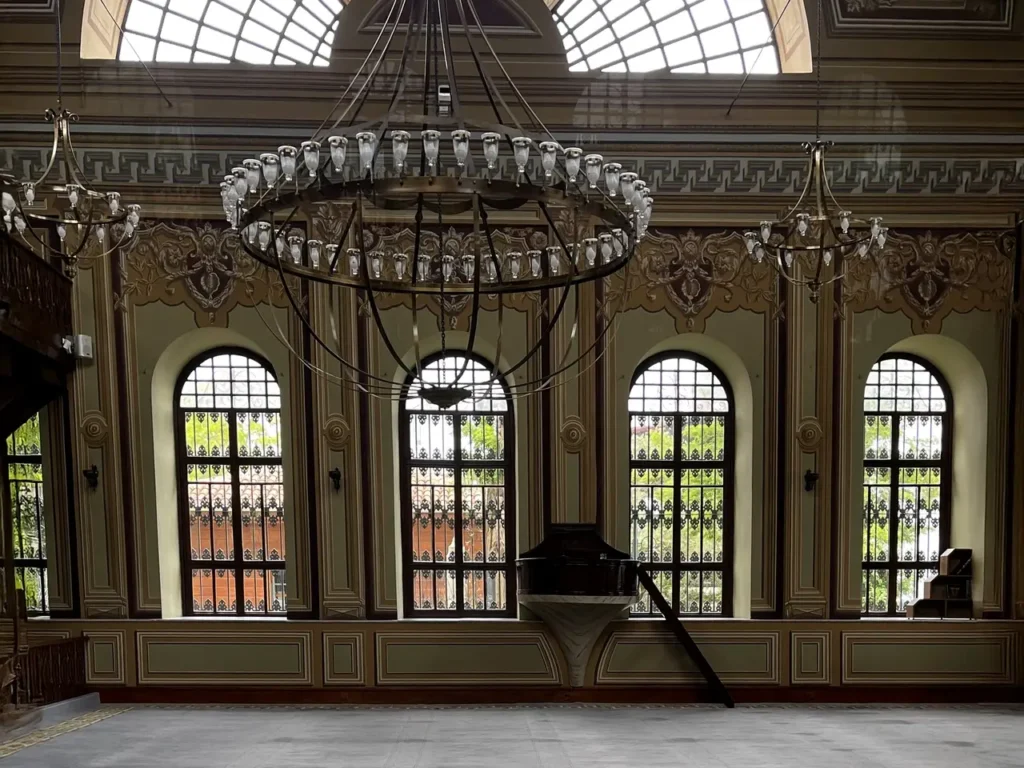
Taksim Mosque
Opened in 2021, Taksim Mosque is a modern addition to Istanbul’s skyline, designed to blend with Taksim Square’s energy. The mosque features contemporary design elements with marble interiors and chandeliers.
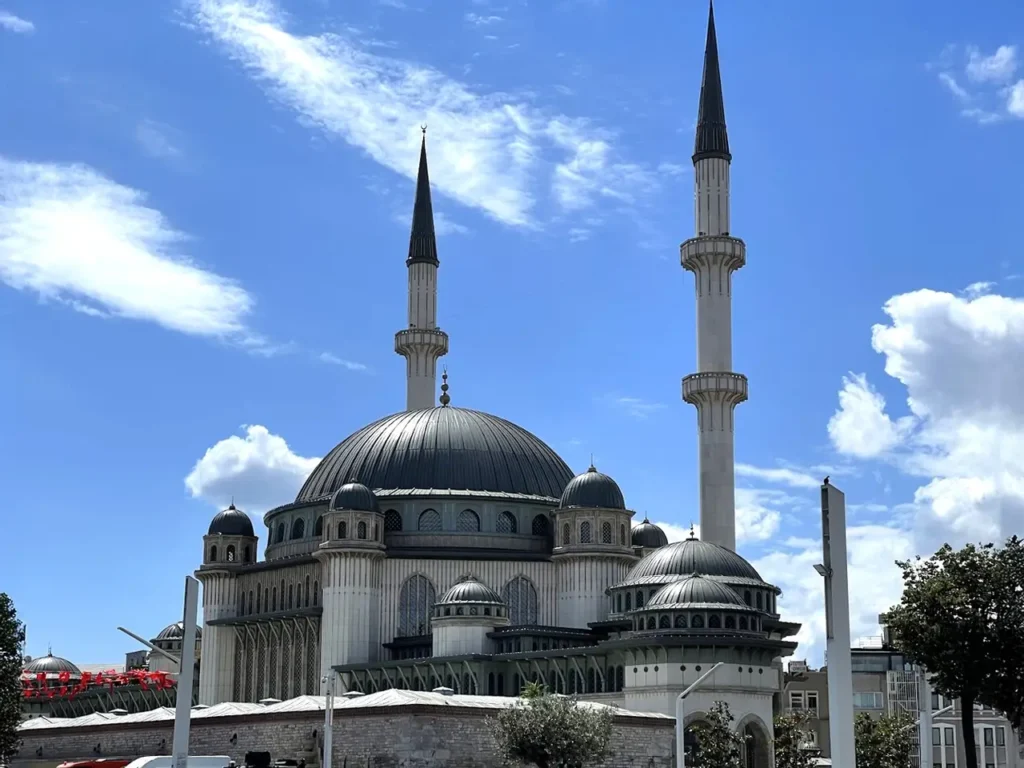
Huseyin Agha Mosque
One of the oldest mosques in the area, Huseyin Agha Mosque was built in the 16th century by Huseyin Agha, a chief eunuch of the Ottoman court.
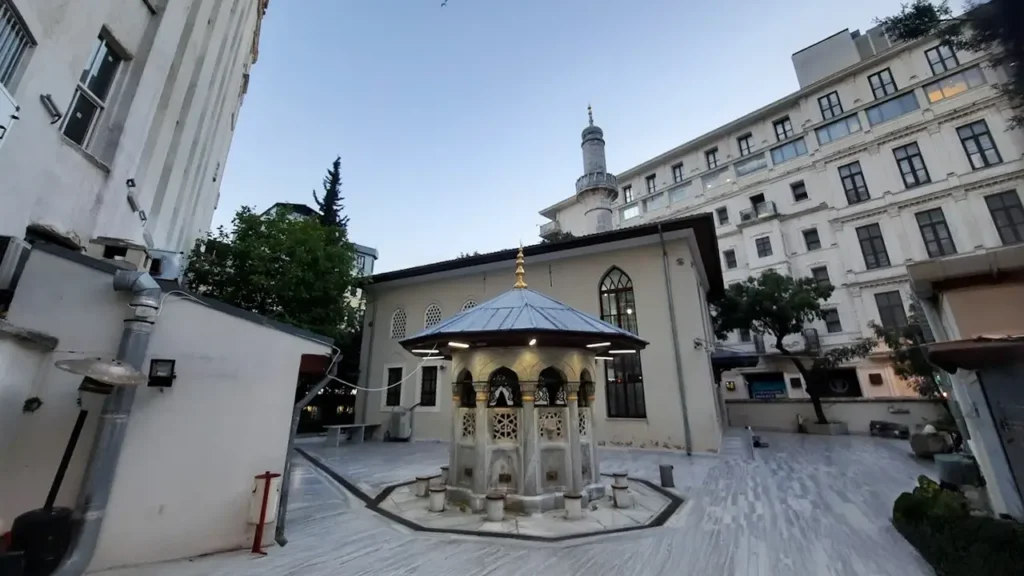
Arab Mosque (Arap Camii)
The Arab Mosque, also called Arap Camii, is one of Istanbul’s oldest mosques with a unique past. Originally a Gothic church built by Dominican friars in the 14th century, it was converted into a mosque in the 15th century after the Ottoman conquest. Its design reflects European Gothic influences with pointed arches and a bell tower that was later adapted into a minaret.
This mosque stands out from others in Istanbul due to its high ceilings and simple interiors, which contrast with the detailing of traditional Ottoman mosques.
Mosques in Besiktas: Yildiz, Levent, Ortakoy
Yahya Efendi Cami
Yahya Efendi Mosque is set in a lush garden. Built in honor of the influential Ottoman scholar and Sufi mystic Yahya Efendi, the mosque is a spot with beautiful Ottoman woodwork and calligraphy.
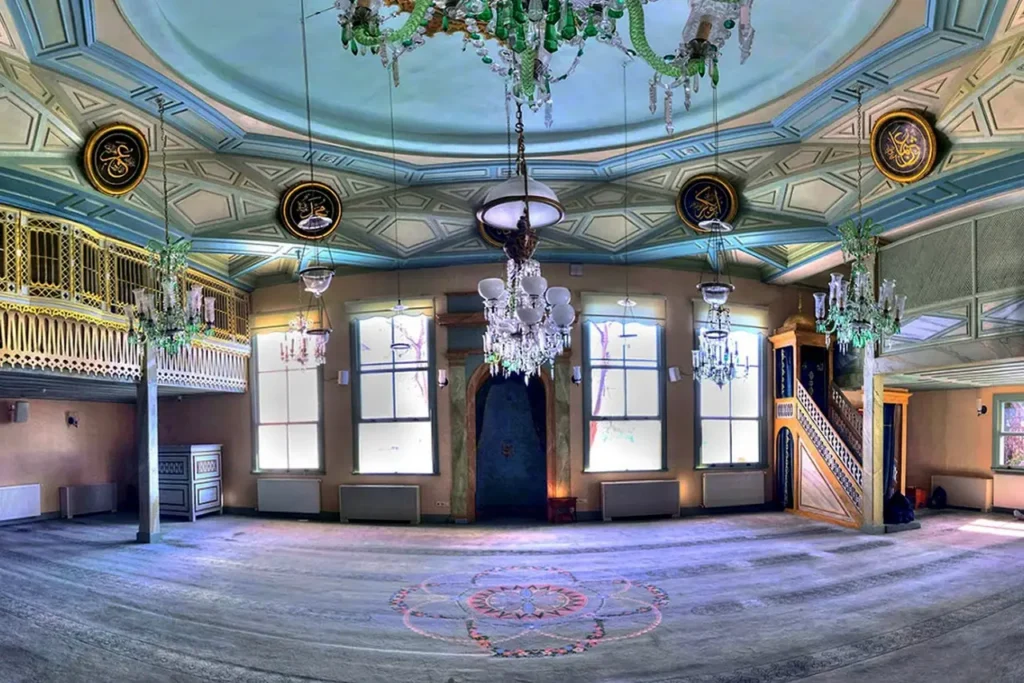
Büyük Mecidiye Mosque (Ortaköy Mosque)
Built by Sultan Abdulmecid I in 1854, the Büyük Mecidiye Mosque (commonly called Ortaköy Mosque) is iconic for its waterfront location and baroque design. Its minarets and wide windows let in ample light, creating a reflection in the Bosphorus waters.
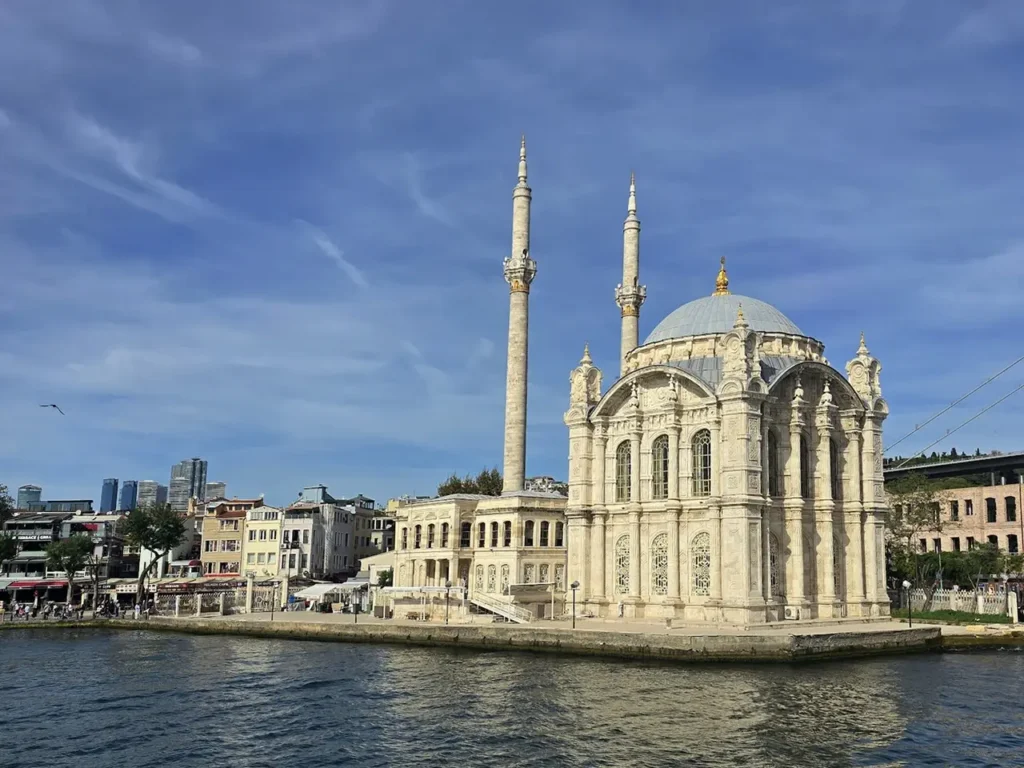
Yıldız Hamidiye Mosque
- Address: Cihannüma, Serencebey Yokusu No:63, 34353 Beşiktaş/İstanbul, Türkiye
- Tip: Combine your visit with a walk through Yıldız Park and a tour of the Yıldız Palace.
Situated near Yıldız Palace, Yıldız Hamidiye Mosque was commissioned by Sultan Abdulhamid II in 1885. This mosque stands out with its Ottoman and Gothic architectural fusion, seen in its high ceilings and delicate stained-glass windows. Known as the “Sultan’s Mosque,” Yıldız Hamidiye served as a private prayer space for the sultan and his family.
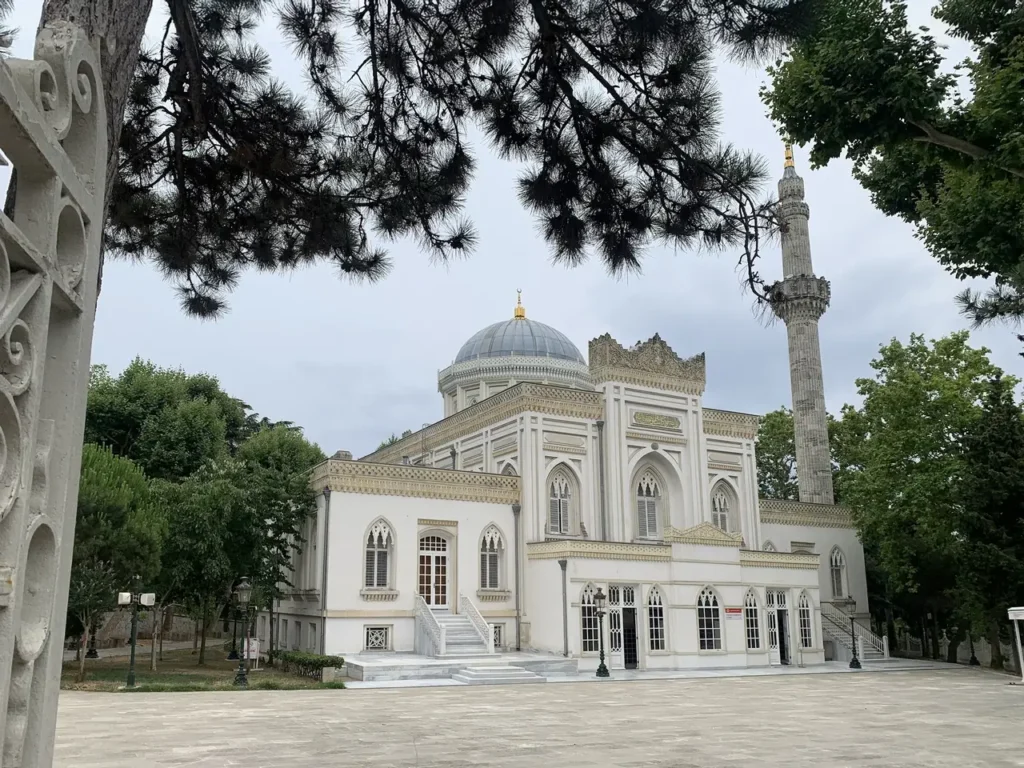
Küçük Mecidiye Mosque
Küçük Mecidiye Mosque is a lesser-known gem. Built by Sultan Abdulmecid I, this mosque is a smaller version of Ortaköy Mosque and features similar neo-baroque designs.
Barbaros Hayrettin Paşa Camii (Barbarossa Mosque)
- Address: Levent, Levent Cd. No:5 D:3, 34330 Beşiktaş/İstanbul, Türkiye
- Tip: Evening is the great time to visit, when the mosque is illuminated
Dedicated to the legendary Ottoman admiral Barbaros Hayrettin Paşa, this mosque stands out with its maritime-inspired architecture. The mosque’s design uses motifs of waves and sails, a tribute to the admiral’s naval achievements. Completed in a modern interpretation of Ottoman aesthetics, the mosque is striking, especially at dusk when it’s lit up for evening prayers.

Mosques on the Asian Side of Istanbul
The Asian side of Istanbul, known for its quieter atmosphere, also has remarkable mosques. They are more modern and extraordinary.
Yeni Valide Mosque (Üsküdar)
Constructed in 1708 by Emetullah Rabia Gülnuş Sultan, mother of Sultan Ahmed III, Yeni Valide Mosque is an Ottoman architectural gem in the heart of Üsküdar.
Mihrimah Sultan Mosque
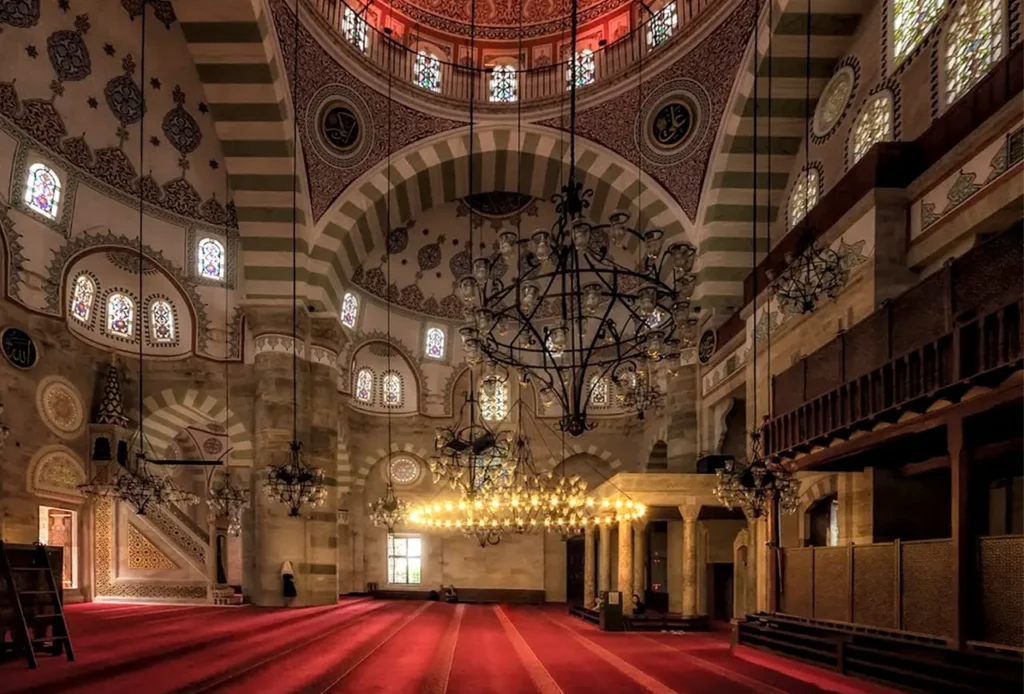
This mosque, built by renowned architect Mimar Sinan in the 16th century, was commissioned by Mihrimah Sultan, the daughter of Suleiman the Magnificent. Sinan designed this mosque with spacious interiors and large windows that let in ample natural light.
Moda Camii
- Address: Caferağa, Şair Nefi Sk. No:28, 34710 Kadıköy/İstanbul, Türkiye
- Tip: Take a walk along Moda’s coast and enjoy the sunset after visiting.
Moda Camii is a simple yet elegant mosque located in the Kadıköy district, known for its vibrant, artistic vibe. It’s not remarkable as others, but still beautiful and calm.
Marmara Üniversitesi İlahiyat Fakültesi Camii
- Address: Altunizade, 34662 Üsküdar/İstanbul, Türkiye
- Tip: The mosque complex includes exhibition areas and spots for reading.
If you want to see modern mosque, this one is a recent addition to Istanbul’s mosques. Built entirely from steel, it features a swirling dome design symbolizing a whirlpool. Located near the Marmara University, the mosque’s modern design and interior are worth seeing.
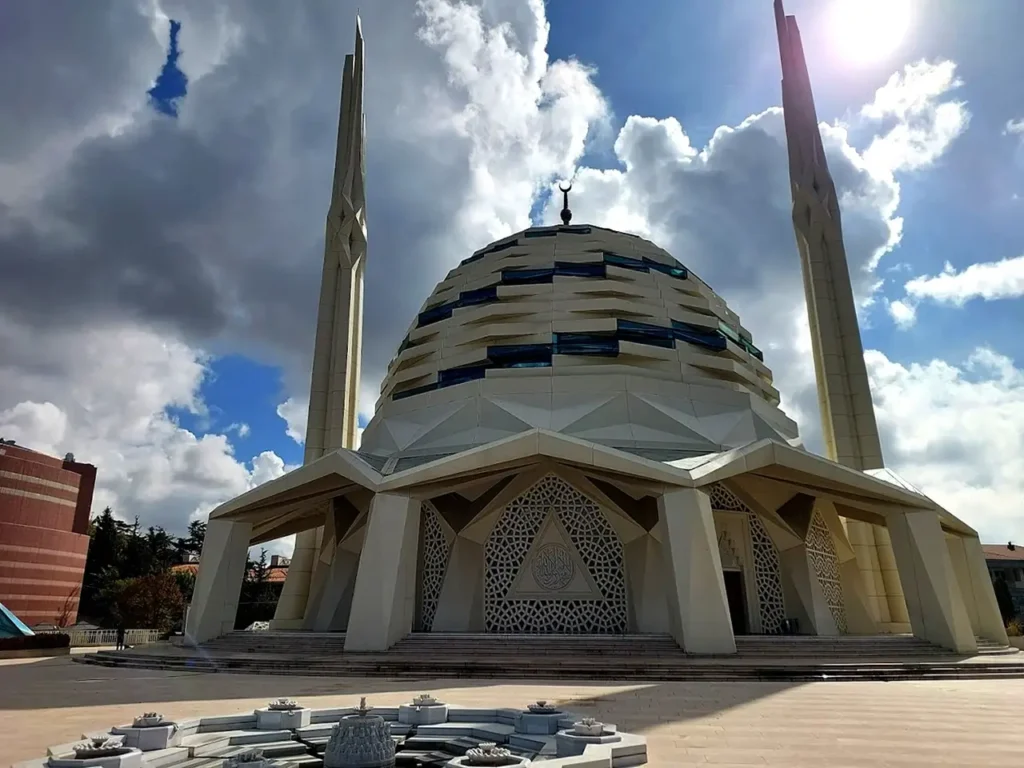
Grand Çamlıca Mosque
- Address: Ferah, Ferah Yolu Sk. No:6 D:3, 34692 Üsküdar/İstanbul, Türkiye
- Tip: Try the nearby Çamlıca Sosyal Tesisleri café for affordable food with views.
Opened in 2019, Büyük Çamlıca Camii is Turkey’s largest mosque, located atop Çamlıca Hill with sweeping views of the Bosphorus and the city skyline. The mosque complex includes a museum of Islamic civilizations, art galleries, and cultural spaces.
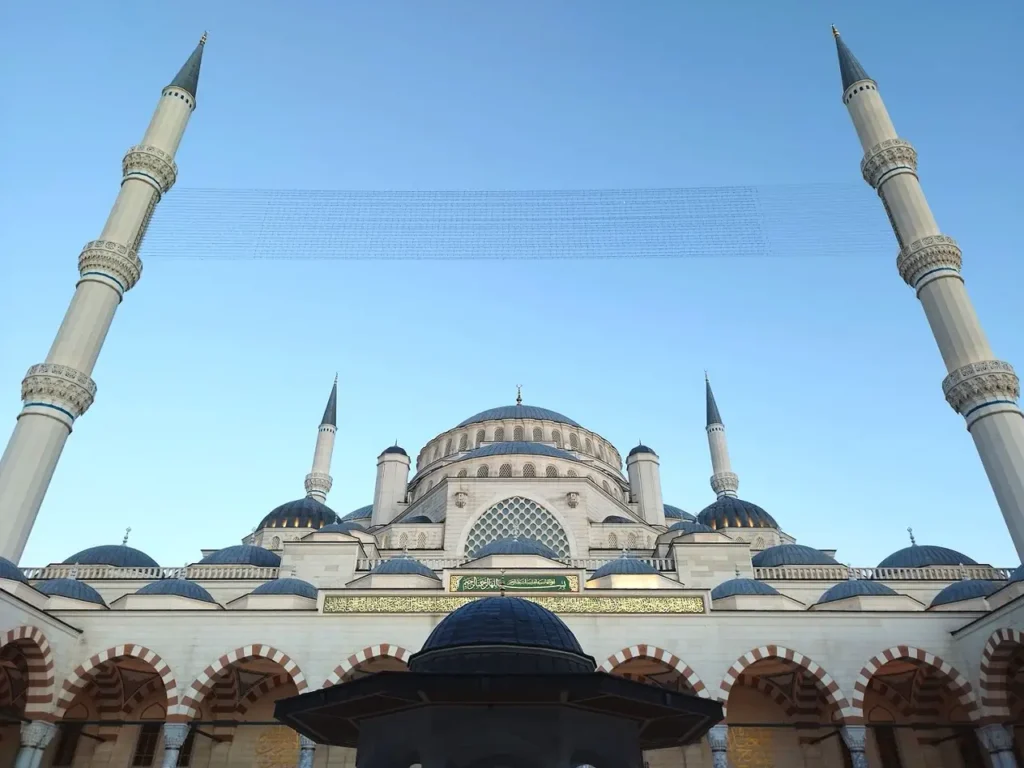
Notable Mosques Outside of Central Istanbul
Eyüp Sultan Mosque
Eyüp Sultan Mosque is one of Istanbul’s most sacred sites. It marks the resting place of Ebu Eyüp el-Ensari, a companion of the Prophet Muhammad who died during the Arab siege of Constantinople. After the Ottoman conquest, Sultan Mehmet II built a grand mosque and tomb here, which became an important location for Ottoman ceremonies.
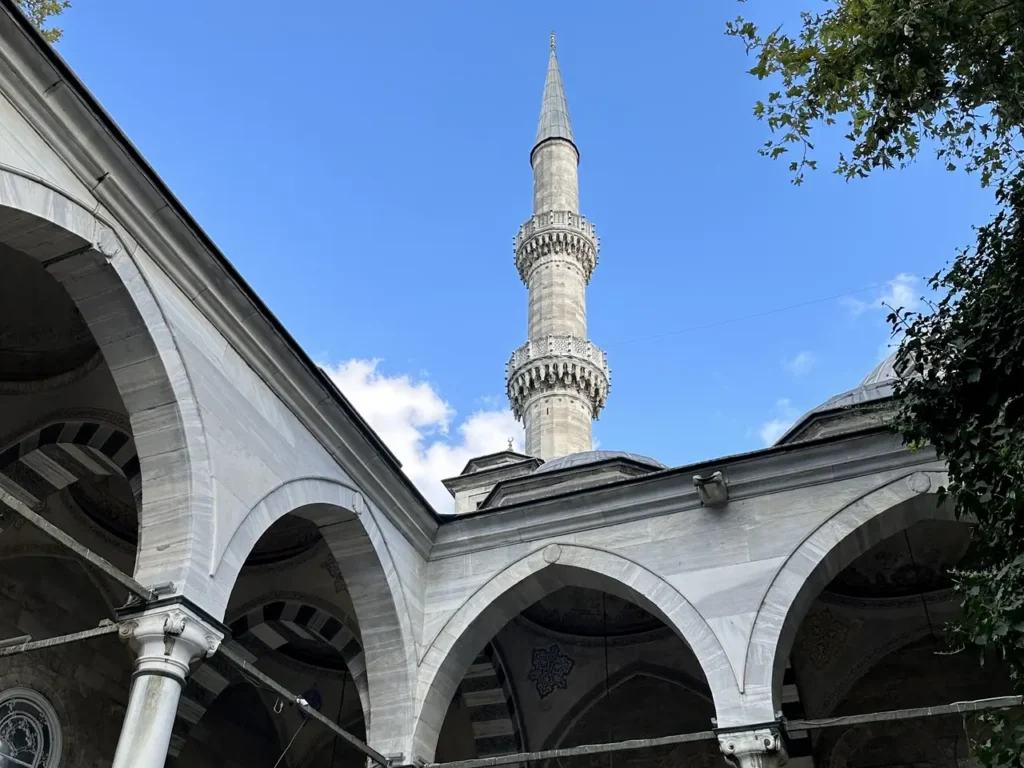
Ali Kuşçu Camii (Istanbul Airport Mosque)
Named after the famed Ottoman astronomer and mathematician Ali Kuşçu, this mosque is in c. The entrance features an exhibition dedicated to Ali Kuşçu, showing his contributions to science and scholarship.
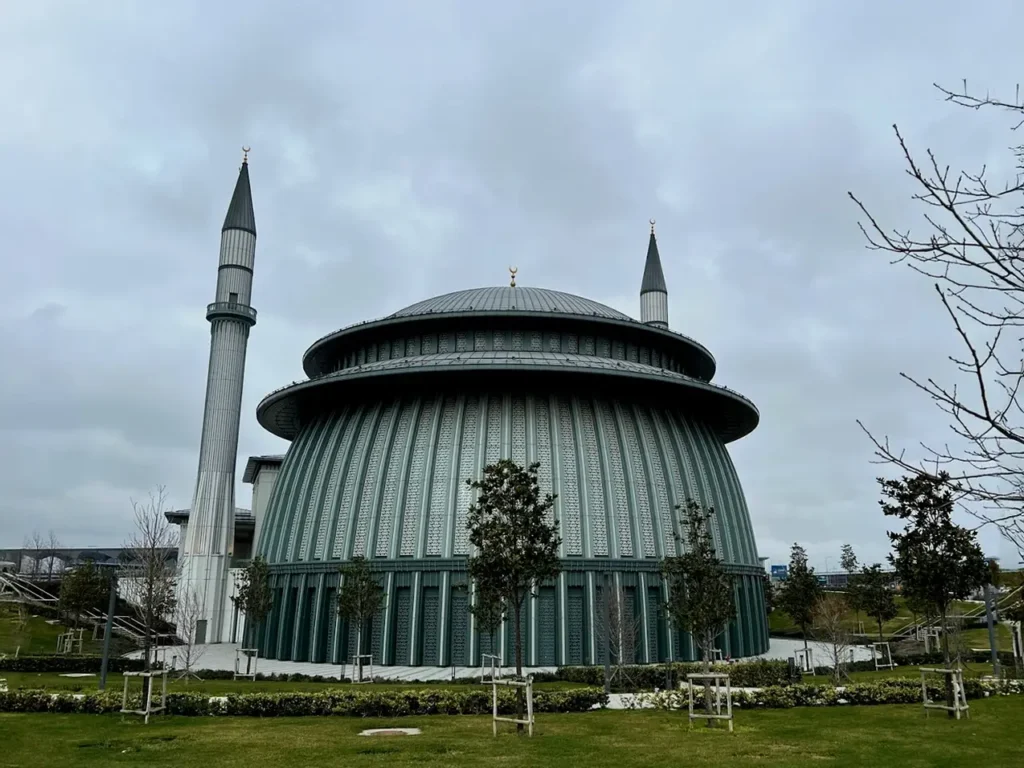
Sancaklar Mosque
Sancaklar Mosque, on the outskirts of Istanbul (very far!), is celebrated for its modern design. Built partially underground, it blends modern, minimalist architecture with the natural landscape, symbolizing humility and simplicity. The mosque has won numerous international awards for its innovative approach to Islamic architecture.
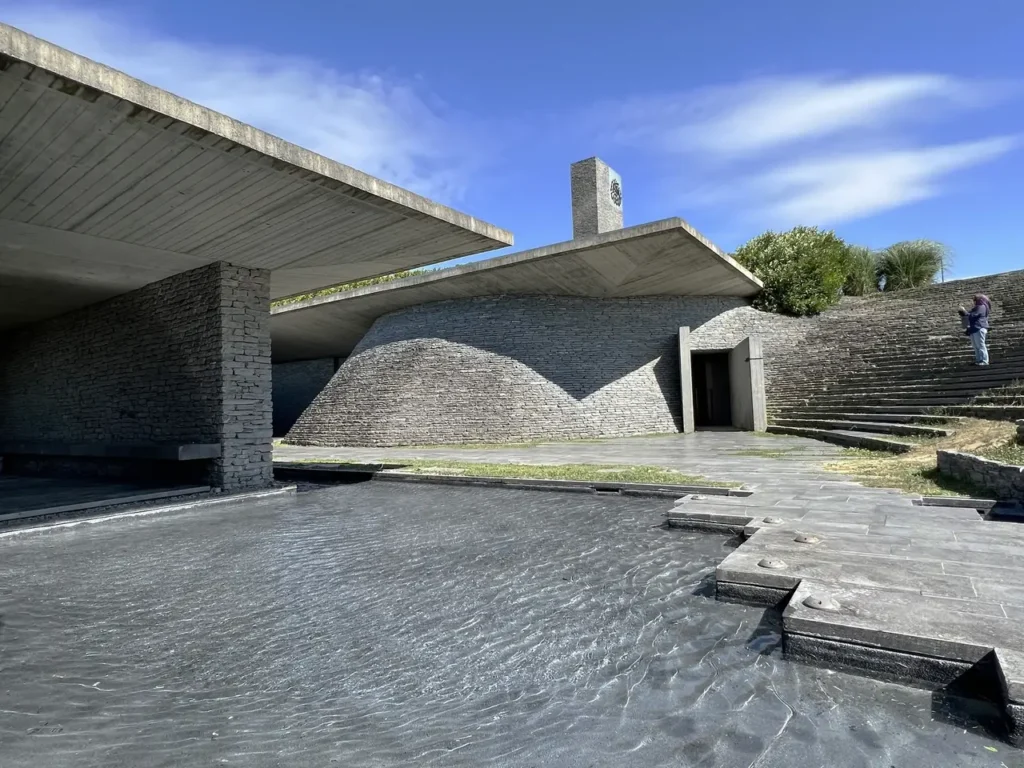
Don’t Miss The Best Tours and Cruises in Istanbul
Old City Digital Route №1
A step-by-step guide to uncovering Istanbul’s hidden gems beyond Sultanahmet. Access the route via Google Maps and a handy PDF guide, both packed with:
- Local dining spots for any budget
- Currency exchange tips
- Recommended hotels in Fatih
- Directions from the airport to Sultanahmet
- Souvenir and gift ideas
$9.99
